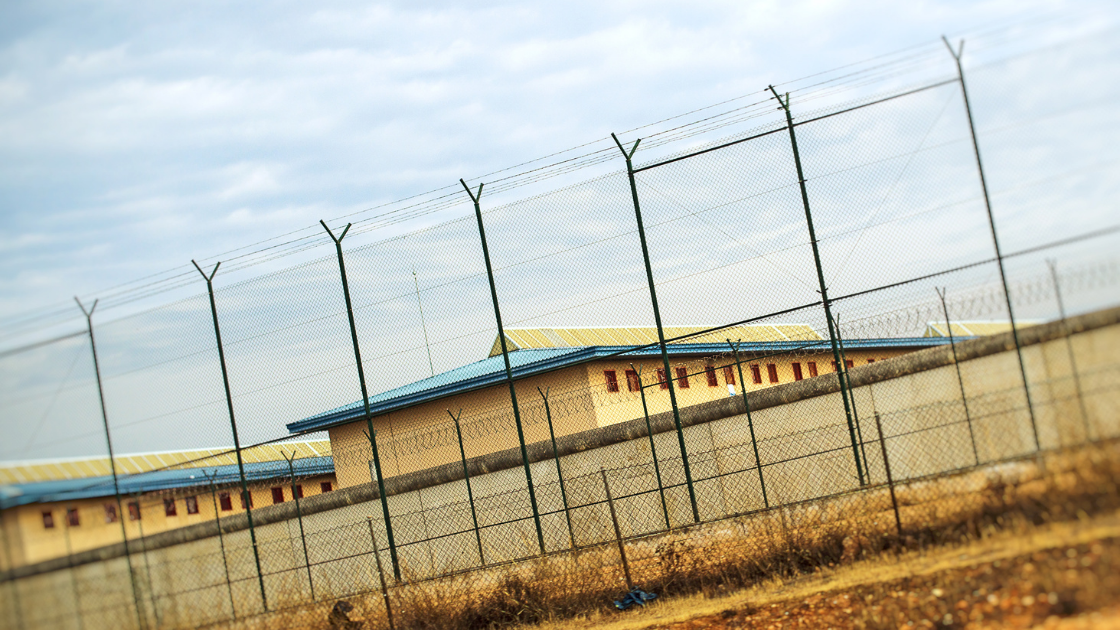With vaccines readily available, and nearly 60% of American adults and 75% of American children now having antibodies from Covid-19 infection, life as we know it has started to return to “normal”.
The first two-plus years of the Covid-19 pandemic have taught us that fully abandoning contagious illness prevention best practices can be dangerous. In fact, experts are predicting a new surge in the summer, and cases and hospitalizations in the US have risen 10% over the past week.
This highlights just how important it is to continue spread-mitigation efforts, especially at places like correctional facilities where people live in very close quarters and outbreaks can happen in an instant.
At Wello, we advocate a dial vs. switch approach to contagious illness prevention where guidelines and procedures can be scaled up and down (but never fully off) depending on factors like rates of community spread. This is especially true if an organization has people who are especially vulnerable to respiratory illnesses or if a facility cannot afford to shut down or reduce capacity.
In its recently updated guidance on the prevention and management of Covid-19 in correctional and detention facilities, the CDC suggests a similar approach where correctional facilities analyze the Covid-19 risk based on both community- and facility-level factors and then select prevention strategies.
In this post, we will look at some of the factors that can help facilities assess risk, as well as the two levels of prevention strategies suggested by the CDC for correctional facilities.
How to Assess Risk of Contagious Illness Spread
The CDC suggests that correctional facilities look at two different categories for assessing Covid-19 risk.
1. Community Levels – The CDC recommends facility leaders look at Covid-19 community levels, which are categorized as low, medium, and high based on case numbers within a community, and the impact of severe disease on community-based healthcare systems. People can visit the CDC website to check any county’s current level.
Additionally, the CDC recommends correctional facilities take into account community levels where inmates, employees, and visitors come from, if the facility takes people from outside the community in which it is located.
2. Facility-Level Factors – The CDC’s guidance is that correctional and detention facilities consider 4 facility-level factors.
- Vaccination Coverage – Facilities should take into account the amount of staff and residents who are up to date on Covid-19 vaccines. Vaccines help prevent severe illness, hospitalization, and death. The CDC guidance says facilities with a low percentage of up-to-date vaccination coverage, should consider more stringent prevention strategies. Wello Health Cloud makes tracking the status of vaccinations and Covid testing easy with a standardized, data-private platform, separate from HR data for full compliance.
- Transmission in the Facility – Facilities should evaluate the current level of Covid-19 spread in the facility. This can be done by testing those individuals who are experiencing symptoms, as well as those they’ve come in close contact with. Each positive result should be followed up on and the CDC suggests that facilities put in place enhanced prevention strategies if one or more additional cases are identified after one person tests positive.
- Risk of Severe Health Outcomes – The CDC suggests facilities take a look at their residents and staff, and assess if they are more likely to get very sick from Covid-19. Additionally, facilities need to determine how readily accessible Covid-19 therapeutics are for residents, and how it is to get them early treatment to prevent severe health outcomes. If the population of residents and staff are likely to get very sick from Covid-19, and access to therapeutics and treatment is limited, the CDC suggests enhanced prevention strategies.
- Facility Structural and Operational Characteristics – Finally, facilities should assess how the physical characteristics and operational procedures can affect the spread within the facility. Things like dense housing arrangements, frequent turnover, and poor ventilation can lead to a higher likelihood of outbreaks.
Wello recently put together a scorecard to help facilities determine when it might be safe to drop mask requirements in the workplace. This scorecard incorporates a lot of the factors listed above and can be used to score the risk of Covid spread within facilities.
Strategies for Covid-19 Prevention: Everyday Operations and Enhanced
The CDC has two groupings of strategies for Covid-19 prevention. The first is strategies for everyday operations that should always remain in place, and the second is enhanced Covid-19 prevention strategies, which should be implemented after completing a community- and facility-level risk assessment, and making the determination that the risk of Covid-19 spread within the facility is high. This is a similar approach to Wello’s suggested dial vs. switch where some prevention methods are always in place, and others are implemented after assessing risk.
Infection Control Procedures for Everyday Operations
The CDC’s strategies for everyday operations suggest providing residents and employees up-to-date vaccinations and boosters, maintaining diagnostic testing and intake observation periods, maintaining standard infection control strategies like cleaning and disinfection, instilling proper ventilation systems, maintaining isolation and quarantine procedures for residents, offering masks to those that want them, and more.
Additionally, the CDC suggests facilities always prevent Covid-19 introduction from staff. One way to do this is to maintain policies that prohibit employees from working while exhibiting symptoms. A great way to screen for symptoms is with the welloStationX and touchless health screening questionnaires.
Enhanced Infection Control Procedures
For enhanced Covid-19 prevention strategies, the CDC suggests continuing the strategies in addition to requiring masks indoors, enhancing ventilation in the facility, strengthening testing procedures with routine screening for everyone, minimizing movement and contact across housing units, and implementing physical distancing strategies where possible.
Ultimately, Covid-19 is unlikely to completely disappear, it is a contagious illness that correctional facilities will need to continue fighting against, with scaled up and scaled down procedures based on spread risk. Reach out to Wello today to learn more about how we can help correctional facilities implement effective infection control practices.


